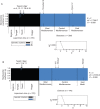Population genetics of Mediterranean and Saharan olives: geographic patterns of differentiation and evidence for early generations of admixture
- PMID: 24013386
- PMCID: PMC3806528
- DOI: 10.1093/aob/mct196
Population genetics of Mediterranean and Saharan olives: geographic patterns of differentiation and evidence for early generations of admixture
Abstract
Background and aims: The olive (Olea europaea subsp. europaea) was domesticated in the Mediterranean area but its wild relatives are distributed over three continents, from the Mediterranean basin to South Africa and south-western Asia. Recent studies suggested that this crop originated in the Levant while a secondary diversification occurred in most westward areas. A possible contribution of the Saharan subspecies (subsp. laperrinei) has been highlighted, but the data available were too limited to draw definite conclusions. Here, patterns of genetic differentiation in the Mediterranean and Saharan olives are analysed to test for recent admixture between these taxa.
Methods: Nuclear microsatellite and plastid DNA (ptDNA) data were compiled from previous studies and completed for a sample of 470 cultivars, 390 wild Mediterranean trees and 270 Saharan olives. A network was reconstructed for the ptDNA haplotypes, while a Bayesian clustering method was applied to identify the main gene pools in the data set and then simulate and test for early generations of admixture between Mediterranean and Saharan olives.
Key results: Four lineages of ptDNA haplotypes are recognized: three from the Mediterranean basin and one from the Sahara. Only one haplotype, primarily distributed in the Sahara, is shared between laperrinei and europaea. This haplotype is detected once in 'Dhokar', a cultivar from the Maghreb. Nuclear microsatellites show geographic patterns of genetic differentiation in the Mediterranean olive that reflect the primary origins of cultivars in the Levant, and indicate a high genetic differentiation between europaea and laperrinei. No first-generation hybrid between europaea and laperrinei is detected, but recent, reciprocal admixture between Mediterranean and Saharan subspecies is found in a few accessions, including 'Dhokar'.
Conclusions: This study reports for the first time admixture between Mediterranean and Saharan olives. Although its contribution remains limited, Laperrine's olive has been involved in the diversification of cultivated olives.
Keywords: Admixture; Laperrine's olive; Mediterranean basin; Olea europaea; Sahara; domestication; microsatellite; population genetic simulations; secondary diversification; wild genetic resources.
Figures




Similar articles
-
Olive domestication and diversification in the Mediterranean Basin.New Phytol. 2015 Apr;206(1):436-447. doi: 10.1111/nph.13181. Epub 2014 Nov 24. New Phytol. 2015. PMID: 25420413
-
The eastern part of the Fertile Crescent concealed an unexpected route of olive (Olea europaea L.) differentiation.Ann Bot. 2017 Jun 1;119(8):1305-1318. doi: 10.1093/aob/mcx027. Ann Bot. 2017. PMID: 28387783 Free PMC article.
-
Genomic evidence for recurrent genetic admixture during the domestication of Mediterranean olive trees (Olea europaea L.).BMC Biol. 2020 Oct 26;18(1):148. doi: 10.1186/s12915-020-00881-6. BMC Biol. 2020. PMID: 33100219 Free PMC article.
-
How to Choose a Good Marker to Analyze the Olive Germplasm (Olea europaea L.) and Derived Products.Genes (Basel). 2021 Sep 23;12(10):1474. doi: 10.3390/genes12101474. Genes (Basel). 2021. PMID: 34680869 Free PMC article. Review.
-
On the origins and domestication of the olive: a review and perspectives.Ann Bot. 2018 Mar 5;121(3):385-403. doi: 10.1093/aob/mcx145. Ann Bot. 2018. PMID: 29293871 Free PMC article. Review.
Cited by
-
Trait-based plant ecology a flawed tool in climate studies? The leaf traits of wild olive that pattern with climate are not those routinely measured.PLoS One. 2019 Jul 17;14(7):e0219908. doi: 10.1371/journal.pone.0219908. eCollection 2019. PLoS One. 2019. PMID: 31314789 Free PMC article.
-
Phylogenomics of the Olea europaea complex using 15 whole genomes supports recurrent genetic admixture together with differentiation into seven subspecies.BMC Biol. 2023 Apr 17;21(1):85. doi: 10.1186/s12915-023-01583-5. BMC Biol. 2023. PMID: 37069619 Free PMC article.
-
Accessing Ancestral Origin and Diversity Evolution by Net Divergence of an Ongoing Domestication Mediterranean Olive Tree Variety.Front Plant Sci. 2021 Jun 24;12:688214. doi: 10.3389/fpls.2021.688214. eCollection 2021. Front Plant Sci. 2021. PMID: 34249057 Free PMC article.
-
Paternity tests support a diallelic self-incompatibility system in a wild olive (Olea europaea subsp. laperrinei, Oleaceae).Ecol Evol. 2020 Feb 5;10(4):1876-1888. doi: 10.1002/ece3.5993. eCollection 2020 Feb. Ecol Evol. 2020. PMID: 32128122 Free PMC article.
-
Evolutionary transcriptomics reveals the origins of olives and the genomic changes associated with their domestication.Plant J. 2019 Oct;100(1):143-157. doi: 10.1111/tpj.14435. Epub 2019 Jul 11. Plant J. 2019. PMID: 31192486 Free PMC article.
References
-
- Angiolillo A, Mencuccini M, Baldoni L. Olive genetic diversity assessed using amplified fragment length polymorphisms. Theoretical and Applied Genetics. 1999;98:411–421.
-
- Bandelt HJ, Forster P, Röhl A. Median-joining networks for inferring intraspecific phylogenies. Molecular Biology and Evolution. 1999;16:37–48. - PubMed
-
- Beaumont M, Barratt EM, Gottelli D, et al. Genetic diversity and introgression in the Scottish wildcat. Molecular Ecology. 2001;10:319–336. - PubMed
Publication types
MeSH terms
Substances
LinkOut - more resources
Full Text Sources
Other Literature Sources

